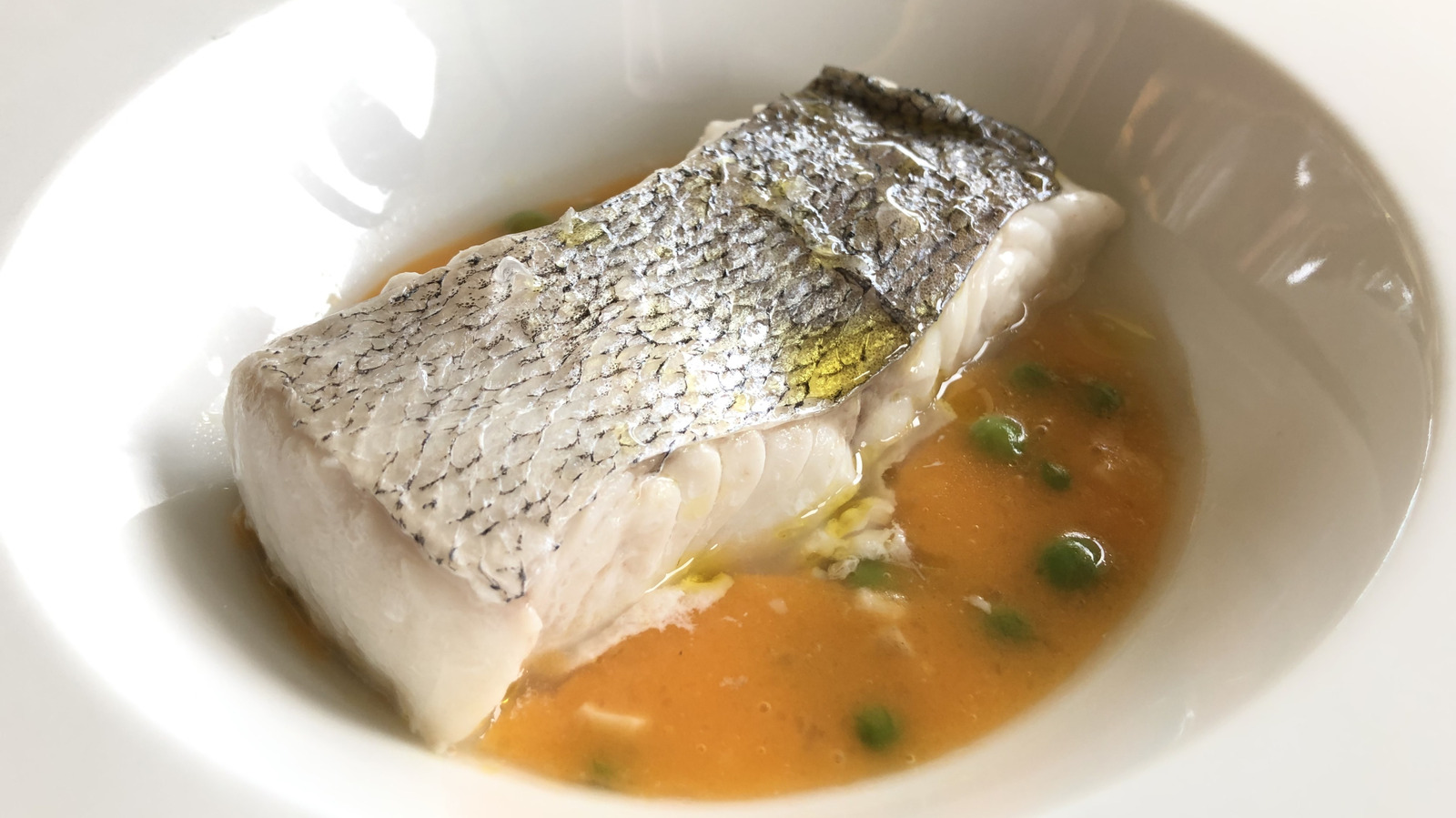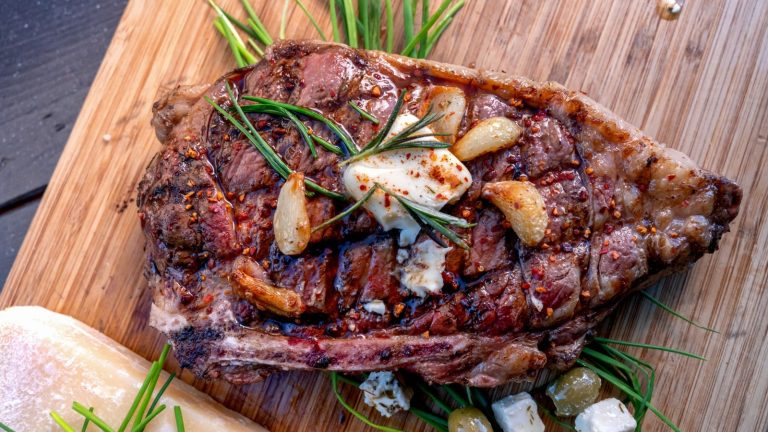We may receive a commission on purchases made from links.
If you’re considering adding fish to your breakfast food lineup, you’d be in good company. Though it may not be a common protein for the first meal of the day in the United States (yet), a number of cultures worldwide don’t limit fish to only lunch and dinner. Fish makes a morning appearance from Asia to Scandinavia to the jolly United Kingdom, and it takes all manner of forms: soups, toast toppers, as an egg accompaniment, fried and on the side, or even just from a bottle (you’ll see).
Maybe you can’t imagine seeing fish in this new morning light. If not, consider this: Fish is generally one of the healthiest foods you can get your hands (or fork) on, replete with a wide variety of nutrients. That includes protein and vitamin D, which roughly half of Americans don’t get enough of. Some fish are also high in omega-3 fatty acids — a trio of wonder fats for our eyes, brains, and other organs.
Fish is also a spectacularly versatile ingredient. Yes, you can bread and fry it, but you won’t find that exact preparation on our list; we’re looking beyond the basic American palate for our breakfast fish dishes. Those of you who already know you love seafood and have just been waiting to get it on your breakfast table in new and tantalizing ways, be prepared for excitement: There’s bound to be something on this list you’ll adore and haven’t heard of.
Combine fish with rice and eggs for kedgeree
Kedgeree is an Indian-inspired breakfast dish from England that typically features eggs, rice, and smoked haddock, all spiced with curry powder and other Indian seasonings. Haddock, or scrod, is available year-round and sustainably harvested. You can try smoking it yourself for kedgeree, or you can buy it from online vendors. Alternatively, you can always make kedgeree with smoked salmon or other white fish instead.
A great dish for using leftover cooked rice, kedgeree is fairly quick and easy to throw together. Slice up some boiled eggs; then simmer your fish in milk with a bay leaf until it flakes. Cook your spices and onions in ghee or butter before adding the cooked rice, eggs, and fish. Mix it all together, and enjoy it with yogurt or raita.
You can incorporate a variety of veggies in kedgeree. Fresh tomatoes go great when finely chopped and added after the aromatics. Frozen peas are a simple but hearty addition that can go in the pan with the onions themselves. A little of both would make for a breakfast as colorful as it is tasty and filling.
Serve fish alongside rice and pickled veggies for a Japanese-style breakfast
It’s impossible to overstate the role of fish in the highly nutritious traditional Japanese diet — and that includes at breakfast. While breakfast in today’s Land of the Rising Sun could be anything from rice porridge to a convenience store egg sandwich with Japanese milk bread (which makes a great French toast, by the way), it’s still extremely common to see the breakfast table laden with a spread of fish, steamed rice, miso soup, fermented soybeans, and pickled veggies.
The fish in a Japanese breakfast often takes the form of broiled or grilled mackerel, salmon, or sardines, but we’re pretty enamored with a quick, easy pan-fried salmon. In a covered pan, pan-fry it over medium heat for a few minutes on one side. Flip, and cook the fish uncovered on the other side. Serve with rice, a pickled cucumber-kombu seaweed mixture, and miso soup.
If this piques your interest but a different flavor profile is more to your liking, use this meal blueprint as a jumping-off point to experiment. Try an herby lemon butter fish, for instance, paired with leftover couscous and a yogurt-based sauce. There are many possibilities.
Give kippers a try with butter, toast, eggs, and lemon wedges
Kippers are a distinctly British food. If you read novels or watch television sourced from across the pond, you’ve likely encountered the image of people breakfasting on these fat herrings that have been split open along the back, cleaned, salted, and then smoked (“kippering” describes that whole process). Being a fatty fish, kippers are a good source of omega-3 fatty acids and possess a rich, salty, smoky, fishy taste that some compare to mackerel or sardines, though the smoking process gives kippers more of a stronger flavor than the latter.
You can poach or grill kippers, but whatever you do, pair them with butter and toast, have a few lemon wedges ready for squeezing, and serve them alongside eggs for a traditional British take. The kippers’ tiny bones are edible and crunchy, but you can remove them by eating from the tail to the head and pulling the meat away as you go, or just pull the spine away, which will bring most of the little bones with it.
Top toast with anchovies and scrambled eggs for a Scotch woodcock
This fun-to-say British breakfast dish (thank the Victorians for the name) consists mostly of simple ingredients you’ve likely eaten numerous times before: scrambled eggs on toast. There’s one vital component to the Scotch woodcock, however, that you may not have had the pleasure of tasting yet: anchovies. Don’t be scared off by the general unflattering reputation these tiny, briny fishes have for being unpalatable; if you like fish, especially sardines, they’re worth a try. Anchovies are a wonderful source of umami, the fifth flavor that is the essence of all things savory, and they give this dish salty, meaty notes you wouldn’t get with regular eggs on toast.
Your anchovies could come in the form of actual anchovies themselves, placed atop the scrambled eggs as the final touch. (Save the oil; there are plenty of ways to use leftover oil from canned anchovies.) If you don’t want the whole fish, you could just prepare your toast with butter and Patum Peperium Gentleman’s Relish, a strong, salty British spread made from anchovy paste. For the ultimate in umami, use both.
On a final note, another key feature of the Scotch woodcock is the creaminess of the scrambled eggs, achieved by whisking them with milk or cream before stirring them constantly over low heat. This will provide the most traditional take, texture-wise.
Combine smoked salmon with eggs like the Norwegians do
Don’t forget that smoked salmon, the star of many a bagel with cream cheese, is fish, too. Lox also pairs nicely with bagels and cream cheese, but it’s worth noting that lox and smoked salmon are different. If you’re looking for a fish-based breakfast beyond the basics, though, take notes from Norway by trying laks og eggerøre: smoked salmon and scrambled eggs. Just scramble your eggs in butter or oil, add some chives if you prefer, and serve either side-by-side with the salmon or with the salmon on top of the eggs, piled on a slice of toast much like a scrambled-eggs version of a smoked salmon eggs Benedict recipe.
Alternatively, go for a baked version by cooking leeks or another mild allium in butter, dividing this among ramekins, and topping it with smoked salmon strips and a raw egg or two. Spoon buttermilk or heavy cream over it all, and bake for around 10 minutes.
Make fish cakes for breakfast
Sometimes a breakfast of “cakes” is what you’re craving, be they pancakes or another variety. If you’re also trying to incorporate fish in your morning meal, you’ve got plenty of options. Consider Indonesian pempek, a traditional fish cake of South Sumatran origins served with fresh cucumber and a sweet and sour sauce. Pempek can be fried, boiled, or steamed, making it perfect for different tastes and dietary needs. Deep-fried pempek, however, is perhaps the most famous version.
To make pempek at home, you’ll typically start with finely ground mackerel (boneless), which you then mix with tapioca or sago flour to form a dough. After kneading, you can shape this into multiple forms (balls, patties, or fish sticks) before deep-frying the pieces until they float.
For the most traditional take, dip your pempek in kuah cuko, a complexly flavored sauce made of palm sugar, tamarind, vinegar, chili, garlic, and salt. This sauce’s sweet, salty, spicy, and sour flavors complement the umami notes of the pempek.
Bake sardines with eggs to enjoy breakfast like a fisherman
Like iconic seafood soup bouillabaisse, fisherman’s eggs are said to have originally powered physically active working-class folks — fishermen, in this case, and in the mornings. Fisherman’s eggs never really got the same reputation for being “fancy” food, though. The dish consists mostly of just sardines and eggs. However, these two simple ingredients come together brilliantly for a double punch of flavor and nutrition. Even better, fisherman’s eggs are the perfect blank(ish) slate on which to play around with other ingredients. The dish could even be similar to shakshuka, depending on what else you put in it.
At the most basic level, you make fisherman’s eggs by sautéing some aromatics like fresh garlic (or its substitutes) in olive oil. You’d then combine this with chopped or mashed sardines, crack a few eggs on top, and bake it for about 10 minutes until the eggs are set. Make it more colorful with some diced red bell pepper, Roma tomatoes, parsley, or olives. Take it up a few more notches by serving with arugula, hot sauce, and toast.
Eat like a Swede with shrimp salad on toast
An open-faced sandwich is a great choice for breakfast as you can use one hand for munching and the other to get ahead of emails, brush a child’s hair, and the like. One popular open-faced sandwich in Sweden would make a fantastic breakfast choice if you’re looking to add some seafood to your mornings: A basic Toast Skagen recipe features shrimp salad on your choice of bread. It’s typically an appetizer, but there’s no reason not to employ it as a breakfast food — an appetizer to your entire day, if you will.
To make toast Skagen, you’ll need to have a mayo-based dressing to coat your shrimp. You can use either a good brand of store-bought mayonnaise or make your own. Into this go herbs and seasonings — chopped fresh dill is a must. Toss your shrimp in most of this dressing (hold a little back for serving), chill it in the fridge a while, and serve it on toasted bread with whatever garnishes you like. We recommend a little red fish roe as a traditional option.
Fill an omelet with shrimp and crab
As perfectly satisfying as regular omelets are for breakfast, the addition of fish or other seafood makes for one luxe improvement. Smoked salmon is great, but don’t forget about shrimp and crab, two ocean-sourced ingredients that can provide a lovely, mild sweetness and pleasant texture in a savory, fluffy omelet. Reach for fresh crab and shrimp if possible, though the canned versions will do – just be aware that some varieties of canned fish can lack the subtle, sweet notes of their fresh counterparts. Finally, it may go without saying, but make sure you’re working with cooked shrimp and crab before filling your omelet with it — the proteins won’t have enough time in the pan to cook all the way.
If you don’t know how to make an omelet, you may want to practice with less pricey ingredients like cheese first before working with seafood. Otherwise, simply spread your shrimp and crab, along with the cheese of your choice, over half your egg base before folding the other half over on top. Serve your omelet right away with a garnish of dill or chives or a little Old Bay seasoning.
Elevate rice porridge into a hearty fish congee
If you’re the type who eats oatmeal in the morning but are seeking a savory, fish-based breakfast, a fish congee may be just what you need. Congee, or rice porridge, is a common breakfast food in China and other parts of Asia, and it’s incredibly versatile. One of its most basic versions contains only long-grain white rice, stock, ginger, and scallions. Other iterations may contain various meats, tofu, or even different kinds of grains. It’s hot, filling, thick, simple (yet satisfying), and pairs great with fish -– particularly a white fish with less oil, such as flounder, haddock, tilapia, or cod.
To make your fish congee, you could adapt a Korean ginger chicken jook recipe by swapping out the chicken for fish that’s been marinated in Shaoxing wine, oyster sauce, ginger, salt, and white pepper, and coated with an egg white. The fish goes into the rice porridge as the final step and should take about 10 minutes to become opaque, depending on the thickness; you might start checking at the 6-minute mark.
In preparing congee, you’ll use a lot more water or stock than you would if simply cooking rice; you’ll also use more time. It will take about 8 cups of liquid for ¾ cup of rice and 1 ½ to almost 2 hours. The resulting breakfast is worth it.
Get creative (or not) with a bottle of cod liver oil
This is for you if you’re interested in the health benefits of fish oil but don’t like fish enough to actually sit through a meal of it. A common addition to an Icelandic breakfast is a spoonful of cod liver oil — you’ll even find it on the table at hotel breakfast buffets there. Many Icelanders credit their long life expectancy (82.6 years as of 2021, per the World Health Organization) to this fishy morning shot.
Like fish oil pills, cod liver oil is a fish oil supplement, but it’s in a league of its own. Sourced from the liver of cod (a fish low in fat) instead of from the tissues of oily fish, cod liver oil is an undisputed rich source of vitamins A and D, with a single teaspoon providing 150% of the daily value for the former and 56% of the latter. That said, before taking a daily shot of cod liver oil, clear it with your doctor first since it’s such a potent source of these vitamins.
The flavor of cod liver oil varies by brand and largely depends on the amount of oxidation the oil undergoes, with more air exposure providing a more rancid, fishier flavor. Carlson Cod Liver Oil is reported to have an excellent taste, but you could shop (or fish) around for one that hits just right. Once you find it, you might even get creative and try making a homemade mayo with cod liver oil for your breakfast sandwiches. Since the oil’s flavor could announce itself quite loudly, you’d want to taste-test as you go to ensure it’s balanced with the other ingredients.





